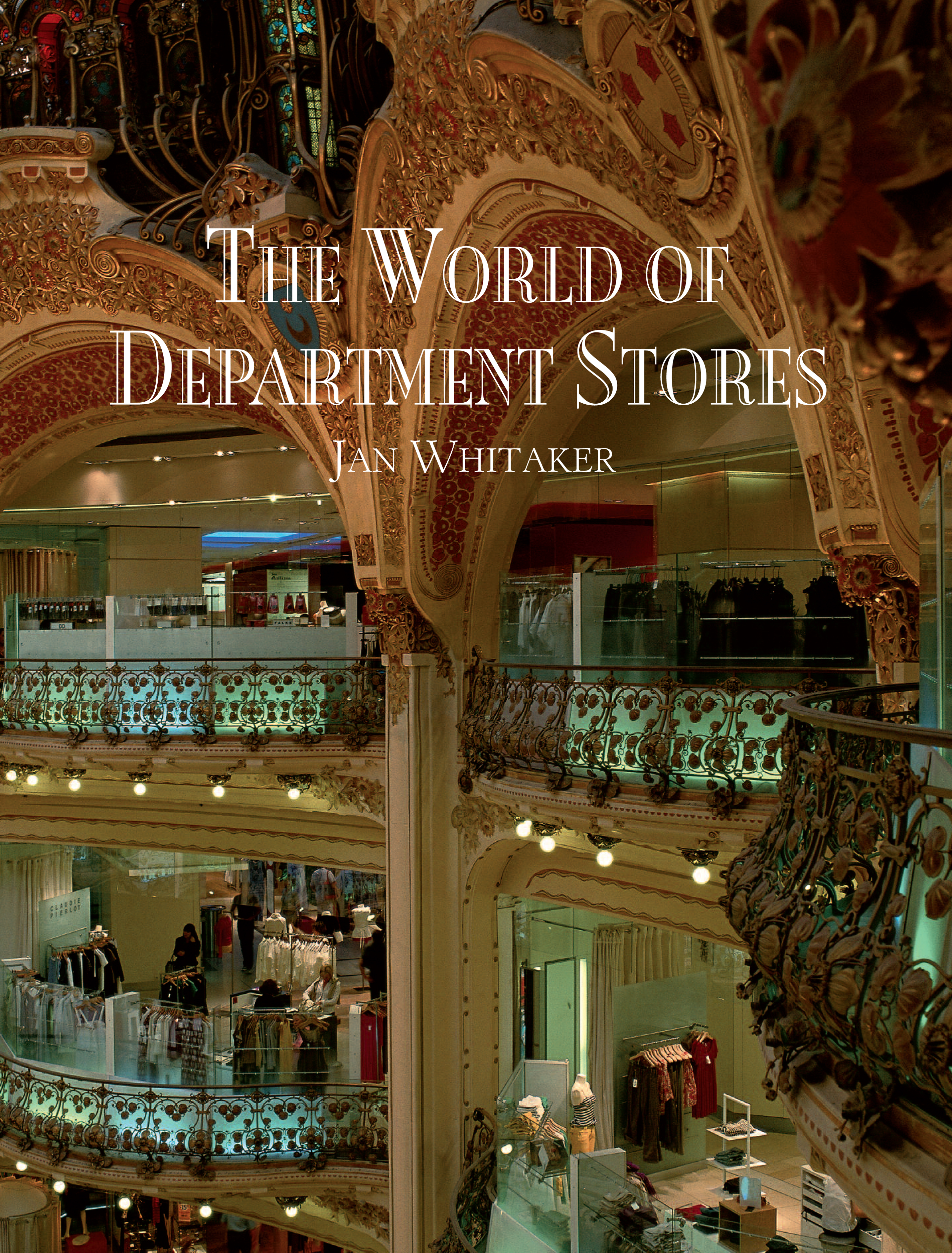 What could be more starkly different from the somber coffee shops of today with their earnest and wired denizens than the beatnik coffeehouses of the 1950s? Could Starbucks be anything but square to the beat generation?
What could be more starkly different from the somber coffee shops of today with their earnest and wired denizens than the beatnik coffeehouses of the 1950s? Could Starbucks be anything but square to the beat generation?
The classic coffeehouses of the beatnik era were sites for conversation, poetry readings, folk music, improvisational jazz, stand-up comedy à la Mort Sahl, and experimental theater. In an era driven by the conformist quest for success and button-down normalcy they sheltered misfits, art, and European culture in settings decorated in moody “opium-den style” or stained-glass/marble/wrought iron “junkyard posh” assembled from the detritus of American cities then being dismantled.
Along with beats, coffeehouses were attractive to teens as well as curiosity seekers and wannabees. (See Dupo IL high school coffeehouse photo.) Authorities had an almost obsessive dislike of coffeehouses and their patrons. Even church basement coffeehouses came under attack. A John Birch Society member lectured youths at a YMCA coffeehouse in a Chicago suburb about how dissolute their gathering place was (“You can’t tell the difference between boys and girls”).
 Although the word beatnik came into usage around 1958 (inspired partly by Sputnik), the phenomenon of dropping out of the “rat race” to lead an existentialist, non-consumerist life was part of the aftermath of World War II akin to the “Lost Generation” after World War I. The first coffeehouses sprang up in Greenwich Village in the late 1940s, but the beats weren’t averse to hanging out in cafeterias either — their “Paris sidewalk restaurant thing of the time.” When coffeehouses began levying cover charges for performances, beatniks tended to drop out of them too.
Although the word beatnik came into usage around 1958 (inspired partly by Sputnik), the phenomenon of dropping out of the “rat race” to lead an existentialist, non-consumerist life was part of the aftermath of World War II akin to the “Lost Generation” after World War I. The first coffeehouses sprang up in Greenwich Village in the late 1940s, but the beats weren’t averse to hanging out in cafeterias either — their “Paris sidewalk restaurant thing of the time.” When coffeehouses began levying cover charges for performances, beatniks tended to drop out of them too.
 The heyday of the coffeehouse was the late 1950s into the early 1960s. Few did much cooking so they weren’t restaurants in the true sense, but many of them offered light food such as salami sandwiches (on exotic Italian bread) and cheesecake, along with “Espresso Romano,” the most expensive coffee ever seen in the U.S. up til then. Of course the charge for coffee was more a rent payment than anything else since patrons sat around for hours while consuming very little. Other then-unfamiliar food offerings included cannolis at La Gabbia (The Birdcage) in Queens, Swiss cuisine at Alberto’s in Westwood CA, Irish stew at Coffee ’n’ Confusion in D.C., les fromages at Café Oblique in Chicago, “Suffering Bastard Sundaes” at The Bizarre in Greenwich Village, and snacks such as chocolate-covered ants and caterpillars at the Green Spider in Denver.
The heyday of the coffeehouse was the late 1950s into the early 1960s. Few did much cooking so they weren’t restaurants in the true sense, but many of them offered light food such as salami sandwiches (on exotic Italian bread) and cheesecake, along with “Espresso Romano,” the most expensive coffee ever seen in the U.S. up til then. Of course the charge for coffee was more a rent payment than anything else since patrons sat around for hours while consuming very little. Other then-unfamiliar food offerings included cannolis at La Gabbia (The Birdcage) in Queens, Swiss cuisine at Alberto’s in Westwood CA, Irish stew at Coffee ’n’ Confusion in D.C., les fromages at Café Oblique in Chicago, “Suffering Bastard Sundaes” at The Bizarre in Greenwich Village, and snacks such as chocolate-covered ants and caterpillars at the Green Spider in Denver.
 Coffeehouses went in for oddball names such as above and also the Hungry i in San Francisco, Cosmo Alley in Hollywood, Fickle Pickle and College of Complexes in Chicago, The Cup of Socrates in Detroit, Café Wha in Greenwich Village, House of Fencing Masters in New Orleans, Laughing Buddha in St. Louis’s Gaslight Square, and Café Mediterraneum in Berkeley.
Coffeehouses went in for oddball names such as above and also the Hungry i in San Francisco, Cosmo Alley in Hollywood, Fickle Pickle and College of Complexes in Chicago, The Cup of Socrates in Detroit, Café Wha in Greenwich Village, House of Fencing Masters in New Orleans, Laughing Buddha in St. Louis’s Gaslight Square, and Café Mediterraneum in Berkeley.
© Jan Whitaker, 2009


 It's great to hear from readers and I take time to answer queries. I can't always find what you are looking for, but I do appreciate getting thank yous no matter what the outcome.
It's great to hear from readers and I take time to answer queries. I can't always find what you are looking for, but I do appreciate getting thank yous no matter what the outcome.



Remembering the Green Spyder in Denver. My brother Joe and I would go during open mike and perform with the likes of Judy Collins, the Smothers brothers and a Black guy (can’t remember his name). They all became famous but not us. Very fond memories.
Pingback: Dr. Mark Plotkin on Espresso, the World’s Favourite Stimulant — Chemistry, Historical past, and Extra (#698) – dailynews
Pingback: Dr. Mark Plotkin on Espresso, The World’s Favourite Stimulant — Chemistry, Historical past, and Extra (#698) – infonews
Pingback: Dr. Mark Plotkin on Coffee, The World’s Favorite Stimulant — Chemistry, History, and More (#698) – Self Help Resources
Pingback: Dr. Mark Plotkin on Espresso, The World’s Favourite Stimulant — Chemistry, Historical past, and Extra (#698) - BeingHealthy
Pingback: Dr. Mark Plotkin on Espresso, The World’s Favourite Stimulant — Chemistry, Historical past, and Extra (#698) - Infinite Travel Deals 24
Pingback: Dr. Mark Plotkin on Coffee, The World’s Favorite Stimulant — Chemistry, History, and More (#698) – Inspire Your Inner Champion
Pingback: Dr. Mark Plotkin on Coffee, The World’s Favorite Stimulant — Chemistry, History, and More (#698) – Kevin Bledsoe's WordPress Site
Pingback: Dr. Mark Plotkin on Coffee, The World’s Favorite Stimulant — Chemistry, History, and More (#698) - The Blog of Author Tim Ferriss
Pingback: And the Beat Goes On - Cold War
Pingback: Coffeehouse Fridays #AtoZChallenge2023 | MOLLY'S CANOPY
Hi, does anyone here have knowledge, memories or photos of Morry’s Rue on State St in Chicago? I recall it as a bookstore that carried very lefty stuff and served coffee ☕️
Thanks!
Andy
Does anyone remember Bellini in Chicago in the 1950s? It burned to the ground in the 1960s. It was a beautiful place that played classical music.
Definitely recall it Cafe Bellini – my first touch of sophistication as a junior high student. Where however did I see Peter Paul and Mary with Miriam Makeba at a coffee house or little clubhouse back in the 1960’s?
Yes, I remember Bellini’s. I was a student at the University of Chicago from 1954 to 1958 and that was my favorite place in the whole world. I was at my parent’s listening to the evening news when it burned down. I was devastated. Not the worst moment of my life, but near to it.
Anyone recall a coffee house on Woodward Ave in Detroit 1962 called the TANTRUM? If memory serves me it was near the ALGIERS MOTEL that is getting some attention now thru the movie DETROIT.
nostrilitch
Yes. My family owned\ran the place. I can recall restocking with my dad back in maybe 62. We were restocking when Marilyn died\was reported. There was at least one other beat club called the hungry I. Cool art too. If you can find Wayne Walker, the old Detroit Linebacker, he’ll remember those clubs; he was a regular with some of the other Lions. He should have a good story about bouncing a couple hecklers…If you find him tell him hello and thanks again. The family then moved on to promote\manage The Village, the Grande and then the Easttowne. You can probably guess my name. Do you have any pix from any?
In Manchester, CT there was a coffee house called THE DEPOT. All the town kids, mostly hippy by nature, would gather every Friday night. All kinds of things going on, music, art, food, just something fun to do to begin your weekend with old friends and meeting new friends.
I remember a place called Abdo’s or Aldo’s on Thompson or Sullivan Street north of Bleeker. The jukebox offered only classical music, which mystified most of the customers who expected to see more contemporary music. The only number many of them recognized was the William Tell Overture (The Lone Ranger theme music), which was played and replayed endlessly.
Does anyone else remember this place?
Hi Joel,
I am hoping the name of the cafe was Abdo’s….if so, that might of been my Uncle’s place! I can’t explain why the jukebox music only played classical but I am thrilled that you remember where it was located. By coincidence, I have been trying to find any information regarding the Abdo Cafe and where it was located. All I knew was that my uncle had a place in Greenwich Village in the 1960’s. What year do you remember eating there? What was it like? If you have any other memories of Abdo’s Cafe, I would love to here them. I had heard that Bob Dylan would eat there too.
Best,
Barbara
I went several times in the early ’60s while in high school and a bit after. Abdo’s was on two floors, street-level and a basement. The basement, which I never saw, opened only sometime after midnight.
Marc
Pingback: Go Tell It on the Mountain | Yahooey's Blog
I am not sure, but I think the boy with the sunglasses, and a cap, sitting next to the girl, in the picture above, is me. I hung out in the Green Spider, back in 1961. I listened to quite a lot of poetry back then, and I also write it today, at 73 years old.
Could be — the timing is right — if you went to high school in Dupo IL.
I happened to live just a few blocks from the Purple Onion in Pontiac, MI back when it was open. It was a popular spot and we all wanted to partipate in the “beat” era…poetry, bongos and congas, berets and all that went with it. I miss those days!! Ray L. from Pontiac
I BELIEVE THE PURPLE ONION WAS ON THE NORTH END OF FRANKLIN RD. WHERE IT BENDS TO HIT SAGINAW. NEVER WENT THERE BUT I DID GO TO THE CAVE OF THE NINTH CAT IN THE CITY. STRANGE PLACE. NIKNAK
I was a child of the 1960’s but grew up in a very small city in Ohio. Canton was not a college town but it had its own coffee house, named oddly enough “The Way Out” (how I found this post!). And even more odd is that it was housed in a street level room at the Odd Fellows Hall west of Cleveland Avenue. The entrance was off a dirty alley called Dewalt Ave., just north of Second St.
There during a two year technical college stint I discovered the Way Out and spent many a week day and week end there trying to be hip in a very square little city. But, I was introduced to indie music, mostly folk, and my love of this genre has continued to this day. Of course, they also played psychedelic songs on the turntable – Cream, Jefferson Airplane, Jimi Hendrix, and the like. And I enjoy those too.
Every so often I reminisce and recall things I am proud of, things I am not and those generic and mainly innocent events that shaped my life. From that tiny place and the people I met I did get to venture to Akron and other places further north to real college towns and larger coffee houses. I got to hear Rod Serling give a talk in a college near Akron. At the Way Out I met a biker named “Loser” and his “Old Lady” whose name i forgot, a long hair named Shank and a black guy who believe it or not had a nickname of “Spade”.
There were innocent things in the 60’s but there were also some troubling events – assassinations of political and religious leaders, fear of attack from a communist force from a small country off the tip of Florida, a racial divide beyond what we can imagine now (that should have ended with the brave words and deeds of Martin Luther King and the voting rights act of 1965) and a war just starting up in Southeast Asia that would lead to the death of more than 55,000 of American soldiers, several of whom I went to high school with.
So coffee houses were started to provide a place for conversations, sharing ideas and possibly effecting some needed change especially those that sprang up in the 1950’s and 60’s. Today we mostly share ideas from behind a computer screen. Perhaps that is why I reminisce and miss those simpler times (minus the troubling times). However we communicate we need to keep it up because as long as we are talking toward a common goal, we will not be fighting. But then I am still an idealistic old hippie who will never stop being hopeful.
Thanks for writing. I enjoyed reading your comments very much.
That is awesome. I live in Canton also, and always wondered if such a coffee house existed. Terry
I lived in Canton Ohio in the 1960’s and there was actually a coffee house there called “The Way Out”. During my 2 years at a small technical school I spent many a weekend and afternoon going there to hang out, listen to folk music or just talk with the fellow customers. Hard to believe that an engineering student could be drawn to such a venue but I was and thoroughly enjoyed the experience. This really introduced me to indie music and I have enjoyed that genre ever since.
CAVE OF 9th CAT in Pontiac was started by three investors from Detroit who wanted to get in on ground floor of what was a new fad. Jack went on to great success in real estate. Several of employees had limited fame in their future — Ambrose Hollingworth-Red-moon, Win Wells, Will Martin. Some of the other people are still around. The painter of some the cat/art was richie h. If anyone remembers will martin, ambrose, win wells, c-tun-a, jack, herb, nik or richie, drop a reply.
Hi Nik,
I was fortunate enough to see some of the artwork in the Cave of the 9th Cat after it had already ceased operations (wish someone had taken photos!)
Richie has passed on; and if you were thinking of Herb S., perhaps the two of them are now racing along some heavenly concourse–as opposed to Woodward.
I looked this up because my dad used to go to the Cave and the Purple Onion in Pontiac in the 1950s. My mother used to tease him about the place. When she’d ask him where he was going he’d say “I’m going to Pontiac to dig in the litter box, Man”. That was his code speak for going to the Cave of the 9th Cat. I just had the urge to look it up after all these years. I was being a bit nostalgic recalling a day when I was about 4 or 5 years old when he took me first to one, then to the other, only to get the same response. He knocked on the door to enter, the slider peep door slid open and a man said “Can’t come in…lose the kid…no kids here” and slammed shut. I felt so disappointed for Dad and I so wanted to see the beatniks perform. After I was near my teens, after Dad’s passing, I tried to find both places, and did find the Purple Onion building, then closed.
Thanks for sharing your story — and what a shame they wouldn’t let you in!
Knew about Herb but lost touch with with Ritchie. Sorry to hear about his passing. You know the building is very popular this time of the year and it’s possible some of the Art work might still be there albeit in a different context.
The first time I saw the “Cave Of The 9th Cat” I think I was 10 or 11 yrs old. My Dad & his brothers were electrical contractors (McCormick Electric) & I think Dad was doing some work on the building & I was with him as he sometimes would take me on jobs when I wasn’t in school. I was back in Pontiac this past summer (2016) and couldn’t find the site where the Cave used to be. Does anyone remember the address or at least the street name please?
Thanks,
Chris McCormick Snyder
The CAVE sat on the corner of Water and Park or Perry.
The building is occupied now by a very busy Halloween Haunted House called EREBUS.
As noted above it is possible the original art might still be there, albeit hidden by the drapes and decor of the haunted house.
I well remember the College of Complexes, in Greenwich Village, in 1960. You ordered your drinks from a waitress who then brought them to your table on a tray, together with a stick of chalk for each recipient. When asked what the chalk was for, she simply pointed at the walls which were ‘blackboards’…
I’m trying to find info on “The Cage”. It was a circa 1960 Beat joint in Detroit, perhaps on Joy road.
There was a beatnik coffeehouse in Philadelphia called The Cage, but I can’t find one in Detroit. In Pontiac MI was the Cave of the Ninth Cat (or The Cave of Nine Cats?) opened in 1960 after a failed attempt by the City Council to keep it out. “Pontiac isn’t a beat town,” declared the mayor.
After The Cave of the Ninth Cat had closed, my Dad once took me to peer through the establishment’s front windows–through which one could still see its vibrantly-painted hipster interior. As an elementary schooler, I remember being stunned to discover, firstly, that amazing artwork languished behind this otherwise nondescript, blue-collar downtown Pontiac building. My amazement deepened as Dad revealed that he had done most or all of the interior murals (some of which were cartoon-like anthropomorphosized cats, dressed in Beatnik regalia.)
Sadly, most of The Cave’s habitues have now passed on–to groovier existential realms, we hope–my Dad included. So it’s heartening to find trace memories of the culture and community they helped create. I would like to encourage others who recall The Cave–or who may have photos of it–to share online as well!
I went to the cage in the D and have a menu from there.
The coffee house you referred to as the Cage was likely The Gilded Cage. It was off center of coffee house central of Philly’s Rittenhouse Square area where you could find others featuring entertainment like the Artist’s Hut, The Second Fret and the Presidium [sic].
Now I’m hungry, thirsty and want to read something. It’s almost 3 in the morning here (and 3 years later).
Great article and great writing too.
I DRANK MANY CUPS OF COFFEE AT C/CON. BACK IN THE DAY I WAS THERE ” LIVE IN DC. ” L.
Cafe Roma (I think it was called) and Cafe Wha? survived into the mid 60’s when I got to visit them. On MacDougall St on opposite ends of the block from Minetta Lane to West 3rd St. The Roma was still beats and cigarette smoke and espresso, but the Wha? became a music place. Jimi Hendrix played there as Jimmy James and the Blue Flames.
Cool blog you have Daddy-O 🙂
Just love it!
Back to the coffeehouses, early sixties, Larry Verne gave a nice impression in his song “Beatnick”.
(You can find it: http://recordcollectorsvaults.blogspot.com/2009/10/youre-hip.html).
Actually they only did serve expresso and poetry there.
Albert
I agree to a point… Café Wha?, Caffe Trieste, Caffé Mediterraneum, and many other beatnik coffeehouses were actually some of the earliest coffeehouses in America serving ESPRESSO.
Italian espresso was something new and part of why the beatniks were attracted to these trend setting coffeehouses. The espresso drinks did play a central role in this culture as well.
The beatnik cultural centered coffeehouse model is alive today and has grown, although the style has changed. Today these coffeehouses are both culture and coffee centered, micro-roasting coffee and do culture in good ways.
I started a post on bX that talks about this and lists a few modern coffeehouses of interest.
http://www.baristaexchange.com/group/coffeetostay/forum/topics/coffeehouses-that-support
Do you have an updated link, 3 years later? Working on my coffeehouse experience for my 8th grade poetry class…
Nope, history doesn’t change that fast!
Wonderful post as usual Jan. The evolution of coffee house sure have come a long way. If memory serves me correctly, weren’t they once “banned” to women?
Hi Louise — As far as I know, the male beatniks were ok with women coming to coffeehouses but back in the Colonial days women didn’t normally go to the English-style coffeehouses which were places where men conducted business, enjoyed strong drinks, and caught up with their newspaper reading. But tell me more if you remember any details! — Jan
Jan – Great post. It is very interesting that the identity of the 195os coffeehouse came from the clientele rather that what was being served. Today, of course, coffee bars, cafes and the like get their identity from the coffee. Coffee has become a commodity and status flows from consuming it. In the 50’s the status came from being present at the coffeehouse.
Amy — Yes, excellent point!